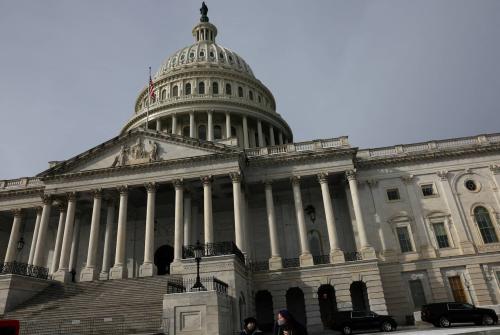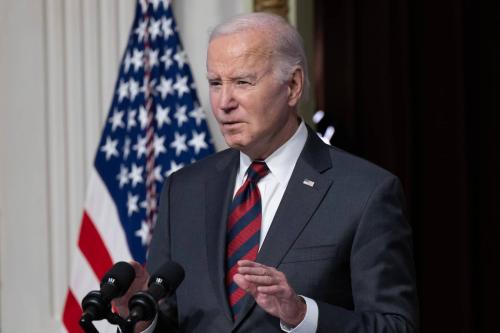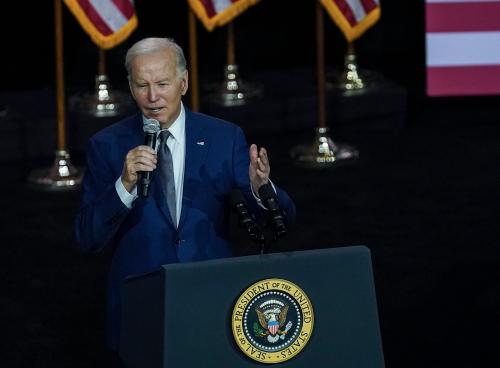Many Biden administration officials and sympathetic analysts are baffled by what they see as a huge gap between negative public sentiment about the economy and its actual performance. They do not understand why supermajorities rate the condition of the economy as “only fair” or “poor” and trust former President Trump more than President Biden to steward the economy over the next four years. After all, Biden supporters rightly insist, GDP growth averaged a robust 3.4% annually during Biden’s first three years, compared to 2.7% for Trump’s. Between January 2021 and January 2024, employment grew by more than 11 million, unemployment fell by four million, and the unemployment rate plunged from 6.3% to 3.7%. In fact, unemployment has remained below four percent for two full years, the longest in history. Biden’s first three years witnessed the creation of 791,000 manufacturing jobs, almost twice the number during Trump’s first three years, and Black unemployment hit a historic low of 4.8%.
Faced with the disconnect between these figures and public opinion, economists and political scientists have explored several hypotheses to explain the gap. There is modest but inconclusive evidence supporting a link between poor evaluations of the current economy and variables such as economic inequality, the rise of conspiracy theories, economic insecurity, and negative expectations about the economic future.
Two other potential explanations for the gap are more promising. First, Brookings scholars Ben Harris and Aaron Sojourner have documented a rise of negative news coverage of the economy, corrected for underlying conditions, since 2018, and they cite a growing body of literature finding a link between the tone of news coverage and measures of consumer sentiment. They acknowledge, however, that the direction of causation is not entirely clear: “Are consumers more negative about the economy because of the news,” they ask, “or is the news reporting more negative stories to match consumers’ beliefs?” Further complicating the picture, they note that the gap between news reports and economic conditions has closed in recent months. While it seems likely that news coverage would have some effect on economic sentiments, the size of this effect is difficult to measure without additional research.
A second line of explanation seems more promising. In an article by a distinguished team of political scientists, David Brady, John Ferejohn, and Brett Parker explore the influence of partisanship on voters’ evaluations of the economy. To no one’s surprise, they find that partisan affiliations do influence economic perceptions. More significantly, they find that the impact of partisanship on economic attitudes has doubled since 2001, consistent with the intensification of partisan polarization during this period. They also find “no evidence” that Republicans are more responsible than Democrats for the growing gap in economic perceptions (or vice versa).
This does not mean that economic sentiments are driven entirely by political affiliations. Although the impact of affiliation has grown substantially, diminishing the accuracy of economic models of voting behavior, models using economic as well as political variables are better predictors than those that take only politics into account.
This returns us to the initial question—the apparent gap between economic conditions and public attitudes. I want to offer a dissenting hypothesis: The gap disappears when voters’ perceptions of what is most important about the economy are taken into account. Numerous surveys have shown that voters regard inflation as the single most important indicator of how the economy is doing—and that they are more likely to define inflation as the level of prices (high or low) rather than the pace of price increases (fast or slow). Prices have risen by 18% during Biden’s first three years in office, compared to 6.2% during Trump’s first three years. Voters notice the difference, and it matters to them.
Why it matters becomes clear when we look at specific goods and services. Since January of 2021, rents have risen by 19.5%; used cars, trucks, and meat by 20%; restaurants and groceries by 21%; airfares by 23.5%; electricity by 28%; gas by 34.6%; eggs by 37.4%; and auto insurance by 44%.
Is it irrational for voters to give much more weight to inflation than to unemployment in assessing economic conditions? Not necessarily, for several reasons. First, inflation leads to higher interest rates, raising the cost of home mortgages, auto loans, and credit card debt. An important new paper finds that including interest rates in the cost of living dramatically reduces the gap between consumer sentiment and economic conditions.
Second, inflation dilutes—and can negate—the impact of rising nominal wages. During Biden’s first three years, average wages for non-supervisory workers rose by 15.4%, but the 18% increase in prices led to a reduction of 2.6% in purchasing power. By contrast, wages rose by 9.3% during Trump’s first three years, yielding a 3.1% increase in purchasing power. Similarly, median household income, corrected for inflation, rose by 10.5% during Trump’s first three years. (The increase for Hispanic households was even larger—11.7%—which may help explain the apparent shift of these households toward Trump.) Although the Census Bureau has not yet reported on household income for 2023, the reports for Biden’s first two years in office—2021 and 2022—show a decline of 2.3%.
Third, less tangibly but not necessarily less significantly, there is evidence from previous periods in the United States and elsewhere that inflation has a symbolic meaning, a broader sense of loss of control. In an Economist/YouGov poll released in early February, only 17% of respondents felt that things in the country these days are “under control,” compared to 66% who said that they were “out of control.”
Finally, unlike unemployment, inflation directly affects everyone. It erodes not only wages and incomes but also the value of savings and retirement funds. It hits lower-income and working-class households, who live close to the margin and must devote a higher share of their income to the basics—rent, food, electricity, and transportation—especially hard.
Defenders of the Biden administration’s economic record note—correctly—that the period of price increases outrunning wages ended in the spring of 2023 and that the past year has witnessed substantial increases in real incomes. But history suggests that economic perceptions lag well behind changes in economic conditions. For example, the recession that began in July 1990 during the presidency of George H. W. Bush officially ended in the spring 1991, but Bill Clinton nevertheless ran successfully against Bush’s economic record 18 months later, in the fall of 1992. Even if the rate of inflation continues to decline while wages and incomes increase, President Biden is in a race against time for voters’ economic sentiments to shift in his favor by Election Day. More favorable news coverage may help, but deep partisan divisions may mute the electoral impact of economic improvements, as they have increasingly since the beginning of the 21st century.







Commentary
Inflation and the gap between economic performance and economic perceptions
March 25, 2024